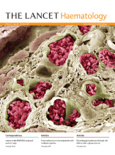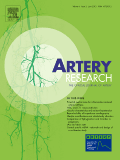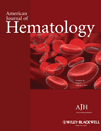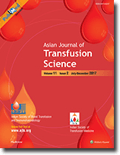
CLINICAL HEMORHEOLOGY AND MICROCIRCULATION
Scope & Guideline
Advancing the Science of Blood Flow and Microcirculation
Introduction
Aims and Scopes
- Hemorheology Research:
The journal emphasizes studies exploring the properties of blood flow and the behavior of blood cells under various physiological and pathological conditions, contributing insights into disorders like diabetes, cardiovascular diseases, and hematological conditions. - Microcirculation Studies:
Research on microcirculation covers the dynamics of blood flow within the smallest vessels, focusing on how microvascular function impacts overall health, disease progression, and recovery. - Diagnostic Imaging Techniques:
The journal publishes papers on advanced imaging methods, particularly ultrasound and contrast-enhanced imaging, that improve diagnostic accuracy and treatment outcomes in various medical conditions. - Therapeutic Applications:
It includes research on therapeutic interventions that target hemorheological properties and microvascular function, exploring new treatment modalities for conditions such as ischemia, diabetes, and vascular disorders. - Translational Research:
The journal encourages studies that translate laboratory findings into clinical applications, fostering collaborations between basic scientists and clinical researchers to enhance patient care.
Trending and Emerging
- Artificial Intelligence in Diagnostics:
There is a rising trend in the application of artificial intelligence and machine learning techniques in diagnostic imaging, particularly ultrasound, enhancing the accuracy of assessments and predictions in various medical conditions. - Microvascular Dysfunction in Systemic Diseases:
Research exploring microvascular dysfunction as a common pathway in systemic diseases, such as diabetes and COVID-19, is gaining traction, highlighting the importance of microcirculatory health in overall disease management. - Personalized Medicine Approaches:
An increasing focus on personalized medicine, including the use of biomarkers and individualized treatment protocols based on hemorheological profiles, is emerging as a critical theme in clinical research. - Innovative Therapeutic Strategies:
Emerging studies on novel therapeutic strategies targeting microvascular and hemorheological parameters, including new pharmacological agents and techniques like ultrasound-guided therapies, are becoming prominent. - Integration of Multimodal Imaging Techniques:
The trend towards integrating multiple imaging modalities, such as combining ultrasound with other imaging techniques, to provide comprehensive assessments of vascular and microcirculatory health is increasingly evident.
Declining or Waning
- Basic Hemorheological Studies:
Research focusing solely on the basic rheological properties of blood without clinical correlations has decreased, as there is a growing emphasis on translational research that links basic science to clinical outcomes. - Single Modality Imaging Techniques:
The use of conventional imaging techniques without integration into multimodal approaches is declining, as the field trends towards comprehensive imaging strategies that combine various modalities for improved diagnostic accuracy. - Generalized Vascular Research:
Research that broadly examines vascular health without specific focus on hemorheology or microcirculation dynamics has lessened, as the journal has shifted to more targeted studies that delve deeper into specific conditions and their vascular implications.
Similar Journals

Lancet Haematology
Catalyzing progress in the field of hematology.Lancet Haematology, published by Elsevier Science Ltd in the United Kingdom, is a premier peer-reviewed journal dedicated to advancing the field of hematology. With an impressive impact factor and listed in the Q1 category in hematology for 2023, this journal ranks #4 out of 137 in the Scopus database, boasting a 97th percentile indicating its influential role in disseminating high-quality research. Since its establishment in 2014, Lancet Haematology has provided a vital platform for researchers and clinicians to share groundbreaking studies, innovative treatment approaches, and novel therapeutic discoveries relevant to various hematological disorders. The journal does not operate under an open access model, but it offers multiple access options to facilitate engagement with its content. By bridging clinical practice and cutting-edge research, Lancet Haematology aims to foster the advancement of knowledge and improve patient outcomes in hematology, making it an essential read for professionals, researchers, and students alike.

Neurosonology and Cerebral Hemodynamics
Pioneering Insights in Neurosonology and HemodynamicsNeurosonology and Cerebral Hemodynamics is a notable academic journal published by the Bulgarian Society of Neurosonology & Cerebral Hemodynamics, dedicated to advancing the field of neurosonology and exploring the dynamics of cerebral blood flow. With an ISSN of 1312-6431, this journal serves as a vital platform for researchers, clinicians, and students interested in the latest methodologies and clinical applications related to ultrasound techniques in neurovascular studies. While the journal does not currently have open access options, it remains a respected source for peer-reviewed articles that contribute to both theoretical insights and practical advancements in neurosonology. The journal aims to disseminate cutting-edge research and foster collaboration among professionals in neurology, radiology, and vascular biology, thereby enhancing the understanding of cerebral hemodynamics in health and disease. As the field continues to evolve, Neurosonology and Cerebral Hemodynamics plays a critical role in shaping future research and clinical practices.

Artery Research
Advancing vascular knowledge for a healthier tomorrow.Artery Research is an esteemed open access journal published by BMC in the United Kingdom, dedicated to advancing the field of vascular biology and cardiovascular medicine. Since its inception in 2006 and transitioning to an open access format in 2019, the journal has become a pivotal platform for disseminating high-quality research on arterial health, pathology, and the latest clinical advancements. With an impactful focus on anatomy, cardiology, and physiology, Artery Research holds a notable reputation within the global research community, ranked in the Q3 and Q4 category quartiles in its respective fields and reflected in its Scopus ranks. The journal aims to foster collaborations and discussions among researchers and practitioners by providing an accessible avenue for publishing pivotal findings and insights. As it continues to evolve through 2024 and beyond, Artery Research remains committed to enriching cardiovascular research and driving innovations toward better health outcomes.

Journal of Blood Medicine
Elevating Standards: The Premier Source for Blood Medicine InsightsThe Journal of Blood Medicine, published by DOVE MEDICAL PRESS LTD, stands as a vital resource in the field of hematology, focusing on the latest research developments and clinical advancements in blood medicine. With an impact factor reflective of its growing relevance, this open-access journal has been delivering quality scholarly work since 2010, ensuring that critical research is readily available to the global scientific community. The journal operates under an open-access model, further enhancing its dissemination and accessibility to researchers, professionals, and students alike. In the 2023 rankings, it secured a Q3 category status within hematology and achieved a commendable 76th rank out of 137 in Scopus listings, indicating its commitment to quality and innovation in this specialized area. Located in New Zealand, the journal's diverse topics encompass clinical research, treatment modalities, and emerging therapies, contributing significant insights vital for shaping future advancements in blood medicine.

AMERICAN JOURNAL OF HEMATOLOGY
Pioneering Insights for Tomorrow's HematologyAmerican Journal of Hematology, published by Wiley, stands as a premier outlet for the dissemination of cutting-edge research in the field of hematology. With a commendable impact factor and ranked #9 out of 137 in the Scopus medicine category, this journal has established a robust presence since its inception in 1976. Operating in the Q1 quartile for hematology, it serves as a crucial resource for researchers, clinicians, and students dedicated to understanding blood disorders and advancing treatment methodologies. While the journal does not currently offer open access options, it remains highly regarded for its rigorous peer-review process and impactful contributions to the scientific community. With coverage extending into 2024, the American Journal of Hematology is committed to fostering innovation and collaboration within the hematological sciences.

Blood and Lymphatic Cancer-Targets and Therapy
Pioneering Insights into Blood and Lymphatic CancerBlood and Lymphatic Cancer-Targets and Therapy, published by DOVE MEDICAL PRESS LTD, is a vital open-access journal that has been disseminating crucial research and findings in the field of hematology and oncology since 2011. With its ISSN 1179-9889, this journal focuses on the latest therapeutic targets and innovative treatment strategies for blood and lymphatic cancers, contributing significantly to the advancement of knowledge and practice in this specialized area. Designed for researchers, healthcare professionals, and students alike, Blood and Lymphatic Cancer-Targets and Therapy aims to foster a deeper understanding of cancer biology and promote collaborative efforts leading to novel therapeutic interventions. The open-access model ensures that research findings are readily accessible to a global audience, underscoring the journal's commitment to enhancing patient care and fostering educational growth in the cancer domain.

Blood Research
Fostering Excellence in the Study of Blood DisordersBlood Research, published by SPRINGER, is a premier journal dedicated to the multifaceted realm of hematology, serving as a crucial platform for disseminating innovative research findings and advancements in the diagnosis and treatment of blood-related disorders. With an ISSN of 2287-979X and an E-ISSN of 2288-0011, this journal is recognized for its commitment to scholarly excellence and impact in the field, currently holding a reputable Q2 ranking in the Hematology category as per the 2023 metrics. The journal spans from 2013 to 2024, providing a broad archive of quality research that is vital for researchers, healthcare professionals, and students alike. Although it is not an Open Access journal, it offers insightful contributions that enhance the understanding of hematological science, fostering the exchange of knowledge crucial for advancing patient care and clinical practices globally. The journal’s performance is underscored by its Scopus ranking in the 46th percentile, reflecting its significant role in the ongoing discourse in hematology.

THROMBOSIS RESEARCH
Transforming Understanding of Blood Clotting MechanismsTHROMBOSIS RESEARCH is a leading peer-reviewed journal in the field of hematology, published by PERGAMON-ELSEVIER SCIENCE LTD. With an impressive impact factor and ranked within the top 10 of 137 in its category according to Scopus, this journal provides a critical platform for the dissemination of innovative research related to thrombosis and hemostasis. Established in 1972, THROMBOSIS RESEARCH has been at the forefront of scholarly communication, addressing key issues, findings, and advancements over more than five decades. Recognized for its high-quality content, the journal is categorized in the Q1 quartile for 2023, reflecting its influence and relevance within the scientific community. Researchers, medical professionals, and students engaged in the study of blood disorders will find valuable insights and the latest discoveries within its pages. Although currently not an open-access publication, THROMBOSIS RESEARCH remains accessible to a wide audience through institutional subscriptions, ensuring that vital research continues to inform and enhance clinical practices around the globe.

Asian Journal of Transfusion Science
Empowering research in hematology and immunology.Asian Journal of Transfusion Science, published by WOLTERS KLUWER MEDKNOW PUBLICATIONS, is a prominent open-access journal dedicated to the interdisciplinary fields of hematology and immunology. With an ISSN of 0973-6247 and E-ISSN 1998-3565, it serves as a crucial platform for researchers, clinicians, and students from around the globe, facilitating the dissemination of high-quality, peer-reviewed research. Established in 2007, the journal has consistently aimed to advance scientific knowledge in transfusion practices, enhancing patient care and safety in transfusion medicine. Despite its recent categorization in the Q4 quartile within both Hematology and Immunology, the journal is making strides toward greater visibility in the academic community, with plans for expanded reach and increased citation impact. With its commitment to open-access publishing, the Asian Journal of Transfusion Science ensures that invaluable research findings are readily accessible to all stakeholders, thereby bolstering collaborative efforts in transfusion science and related disciplines.

JOURNAL OF VASCULAR RESEARCH
Elevating the discourse in vascular research.Welcome to the JOURNAL OF VASCULAR RESEARCH, a reputable academic journal published by KARGER that has been a cornerstone of vascular research since 1964. With an ISSN of 1018-1172 and an E-ISSN of 1423-0135, this journal plays a vital role in disseminating cutting-edge research in the fields of Cardiology and Cardiovascular Medicine and Physiology. Currently categorized in the Q3 quartile for both disciplines, it ranks as #179 in Cardiology and #131 in Physiology according to Scopus, showcasing its significant contribution to the scientific community. Although the journal operates on a subscription basis, it strives to provide accessible content that informs and inspires researchers, professionals, and students alike. As the journal looks forward to its convergence in 2024, it continues to uphold its mission of advancing knowledge, fostering innovation, and encouraging collaboration within the dynamic realm of vascular research.